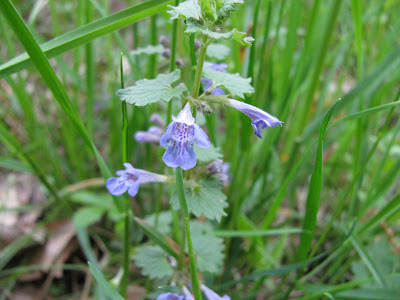Easily the most fragrant of the spring blooms are those of the wild honeysuckle. It's clusters of pink blossoms are eagerly sought out by hummingbirds making their way north to
their summer breeding grounds.

Perhaps the "Queen of the upland trees" the Dogwood's
brilliant white flowers stand out against the basic green
foliage of the spring woods. Sadly I've lost some Dogwood trees on my Back40 to the Dogwood
Anthracnose, a fungal disease that appeared in the 1980's. According to articles I've found on the
Internet the disease seems to be abating but the damage is done and it will take years to replace the trees that succumb to the disease.

This maroon flower is the blossom of the Paw Paw tree. With its rank scent it is pollinated by only the carrion fly. I've found several wild groves of Paw Paws growing along my
smallmouth bass streams in southern
Bedford and Fulton Co. here in Pa.


This is the blossom of the Mountain Ash. Although not found in my home coverts in Pa. it grows profusely in the Dolly Sods area of West Virginia. In the fall it erupts with a bounty of red-orange berries to brighten up the landscape.

























































